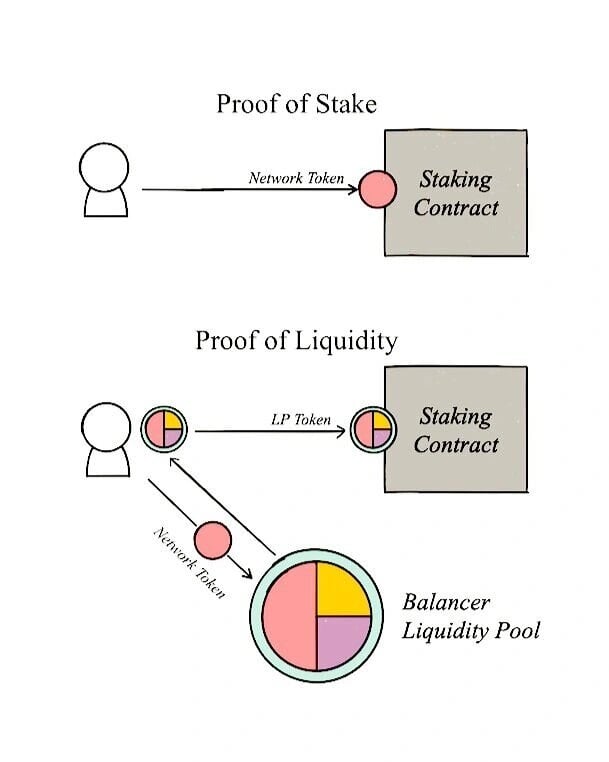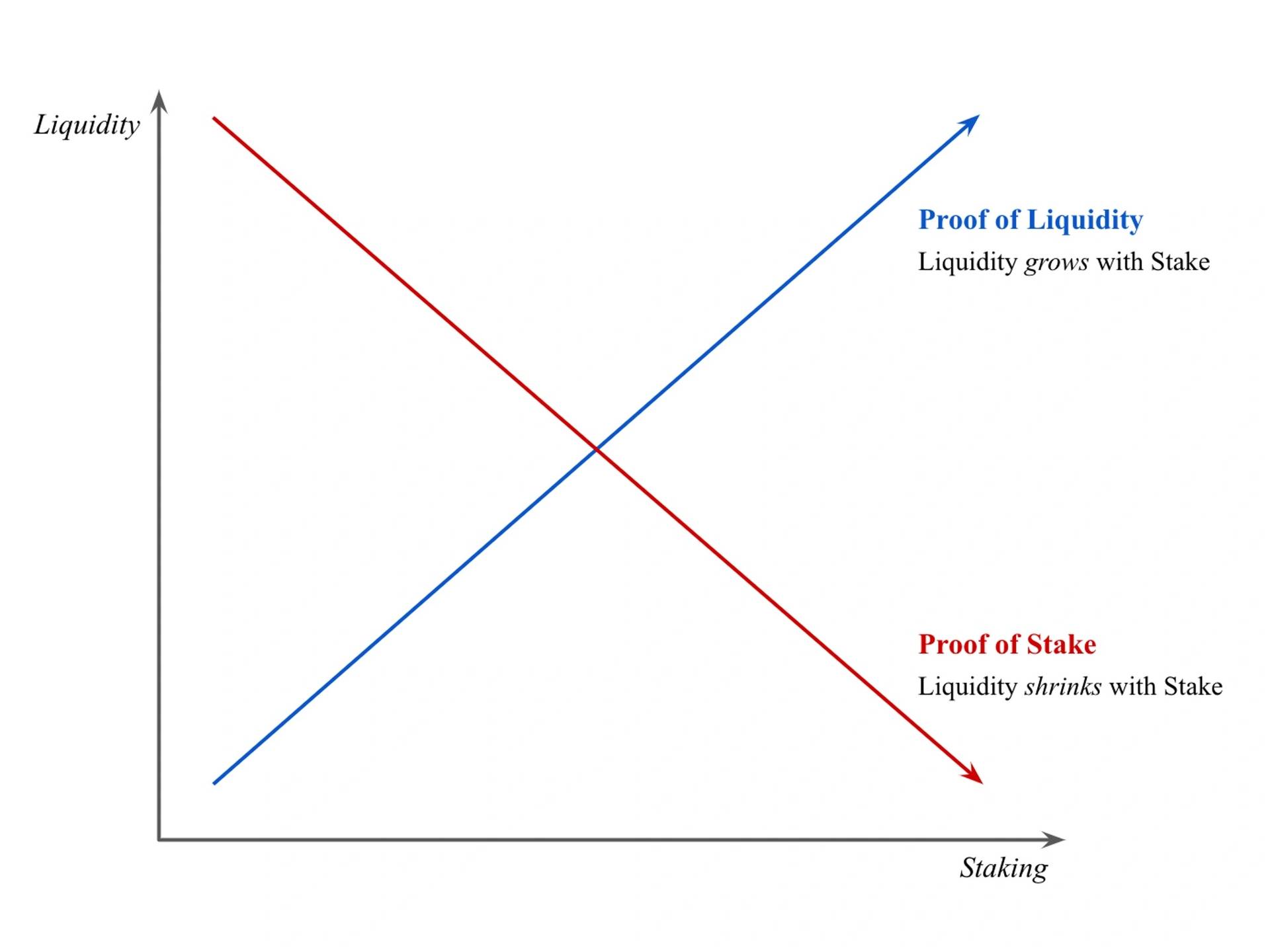Subscribe to wiki
Share wiki
Bookmark
POL (Proof of Liquidity)
The Agent Tokenization Platform (ATP):Build autonomous agents with the Agent Development Kit (ADK)
POL (Proof of Liquidity)
POL (Proof of Liquidity) is an idea to utilize the Balancer pool to create a direct and positive relationship between staking and liquidity. It is in the nature of zero reservations to be provided to the team or any individual upfront. POL is an incentive for participants who contribute to balance the market volatility and ecological governance, as well as the fuel for extracting Pool-X system resources.[1][4]
Overview
In a standard proof-of-stake system, the more people stake, the more tokens are taken out of circulation. This may seem good for the price of the token, but in many cases insufficient liquidity can get in the way of network growth. To create a direct, positive relationship between staking and liquidity, balancer pool tokens was introduced as proofs of liquidity that can be staked in place of the network’s token, such that its liquidity grows together with staking.
A Balancer Pool is an automated market maker with certain key properties that cause it to function as a self-balancing weighted portfolio and price sensor.
Balancer liquidity pools are designed to hold a basket of tokens according to a specified index. Tokens held in these pools are available for trading on the Balancer decentralized exchange. As people and contracts trade on Balancer, the protocol automatically rebalances the pools to make sure their weights are maintained.[4]
Proof-of-Liquidity (POL) is a novel consensus mechanism that builds on Proof-of-Stake but eliminates the problem of locked capital, which is detrimental to DeFi. Proof-of-Liquidity unlocks staked liquidity by using liquidity pool tokens as staking assets, allowing for deeper liquidity and thereby increasing capital efficiency.[3]

Playing a substantial role in the Pool-X ecosystem, POL bridges between tokens that are staked and those in circulation, paying with which allows the users to obtain instant liquidity even when the crypto assets are still in staking.
Pool-X is an exchange that provides liquidity for pledged assets. Unlike traditional mining pools, Pool-X does not compete with the nodes. Users are able to freely choose a node while receiving benefits from the staking of the digital asset plus a certain amount of the POL that is generated each day. Users can get liquidity by trading the staked crypto assets through the use of POL in the liquidity trading market, which lowers the barrier for staking and increases the staking rate while improving the overall security.
After completing the early stages of the free-market construction, it will gradually switch to a decentralized platform and be jointly governed with the community in an autonomous manner.
The total supply of POL stands at 1 billion. The distribution of POL is divided into 3 parts: LockDrop (10%), staking Mining (50%), POL Node Mining (28%) and the budget system (12%).[2]
POL is the barometer to supervise the activeness of PoS ecology. It is hereby leading to the increase of market demand and liquidity of POL when the price of a staked crypto has normally fluctuated. The listing of more staking projects and engagement of nodes in pool-X will also tremendously enhance the demand of POL in the liquidity exchange as well as accelerate the destruction of POL and ultimately forming a virtuous circle of PoS economy.
Role of POL in the Liquidity trading market
POL is the link between the crypto asset in the pledge state and the free circulation asset. If the user wants to immediately exchange for the freely tradable asset, they can pay POL for the lock tokens in the liquidity trading market. It should be noted that the exchange of tradable assets is not necessarily paid by POL, or it may be charged, depending on the urgency of the user's liquidity needs.
The amount of POL paid/received is determined by the market, different pledged assets require different POL, and the amount of POL that needs to be paid/charged can be viewed in the transaction interface. For example, suppose the user has pledged 200 ATOM products, and during the pledge period, the user wishes to immediately exchange 100 freely circulating ATOMs. At this time, the user can choose ATOM-Staking in the liquidity trading market, sell 100 pledged ATOM vouchers in the market, and pay a certain amount of POL, you can immediately exchange 100 freely circulating ATOM, at this time, the user's assets include 100 ATOM in the pledge and 100 atoms that can be freely circulated.
Redemption period
The redemption period is the period that users need to wait for redemption. Redemption is a behavior on the blockchain and is set by projects based on their own network security. Therefore, the redemption period of each project is different. For example, the redemption period of ATOM is 21 days.
The redemption period of Fixed Staking products will reduce every day when calculating starts. The redemption period will affect the liquidity of the staking. The shorter the redemption period is, the less the users are likely to redeem the staked funds and vice versa. The Pool-X platform designs the adjustment coefficient based on the length of the redemption period regularly.
Risks
Proof-of-Liquidity (POL) combines the reward and risk potential of Staking and liquidity provision. Risks are slashing risk if staking with a misbehaving node and impermanent loss risk. These risks are in general well understood by now and steps can be taken to mitigate them.[3]
See something wrong?
The Agent Tokenization Platform (ATP):Build autonomous agents with the Agent Development Kit (ADK)
